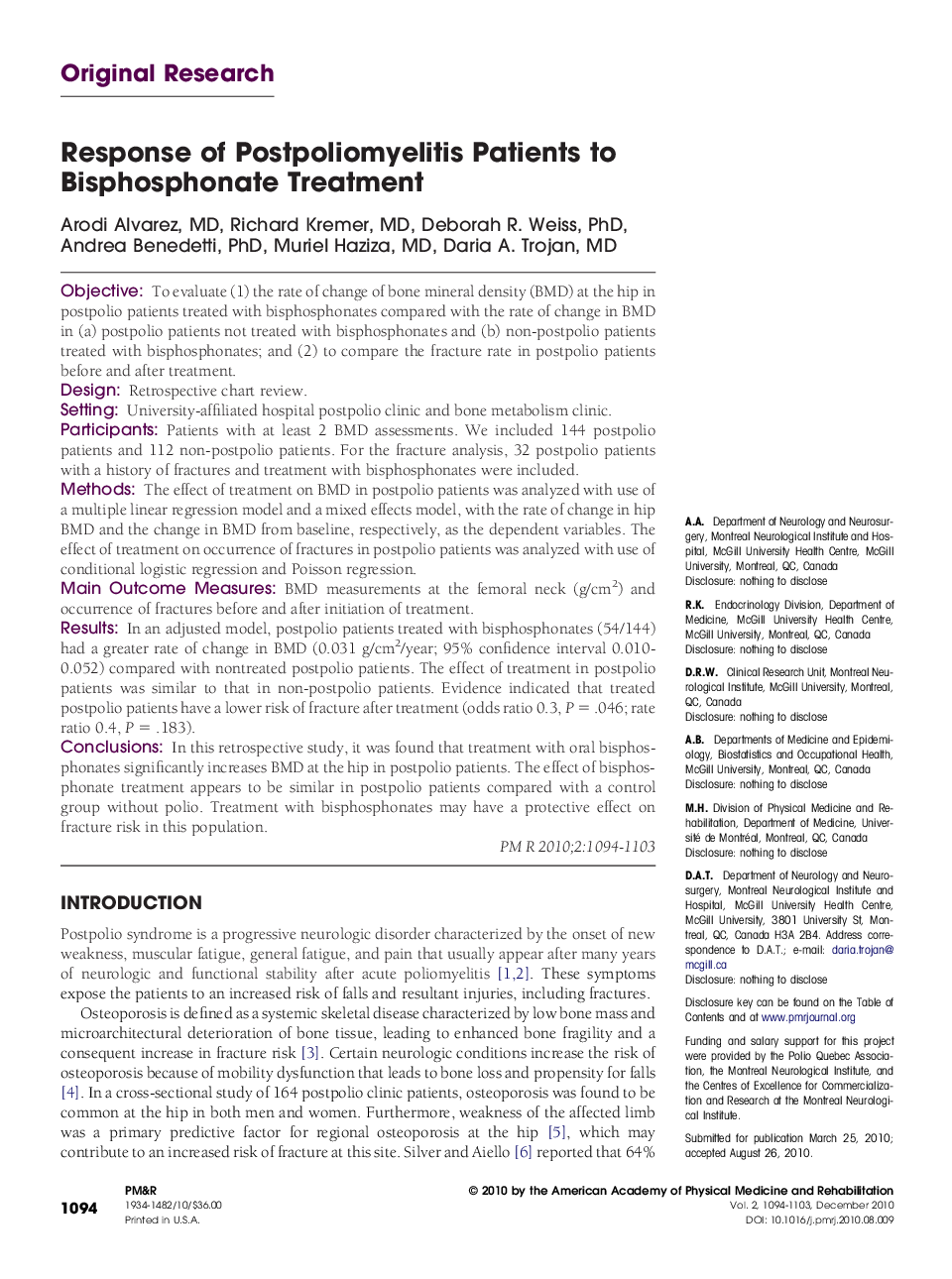| Article ID | Journal | Published Year | Pages | File Type |
|---|---|---|---|---|
| 2706194 | PM&R | 2010 | 10 Pages |
ObjectiveTo evaluate (1) the rate of change of bone mineral density (BMD) at the hip in postpolio patients treated with bisphosphonates compared with the rate of change in BMD in (a) postpolio patients not treated with bisphosphonates and (b) non-postpolio patients treated with bisphosphonates; and (2) to compare the fracture rate in postpolio patients before and after treatment.DesignRetrospective chart review.SettingUniversity-affiliated hospital postpolio clinic and bone metabolism clinic.ParticipantsPatients with at least 2 BMD assessments. We included 144 postpolio patients and 112 non-postpolio patients. For the fracture analysis, 32 postpolio patients with a history of fractures and treatment with bisphosphonates were included.MethodsThe effect of treatment on BMD in postpolio patients was analyzed with use of a multiple linear regression model and a mixed effects model, with the rate of change in hip BMD and the change in BMD from baseline, respectively, as the dependent variables. The effect of treatment on occurrence of fractures in postpolio patients was analyzed with use of conditional logistic regression and Poisson regression.Main Outcome MeasuresBMD measurements at the femoral neck (g/cm2) and occurrence of fractures before and after initiation of treatment.ResultsIn an adjusted model, postpolio patients treated with bisphosphonates (54/144) had a greater rate of change in BMD (0.031 g/cm2/year; 95% confidence interval 0.010-0.052) compared with nontreated postpolio patients. The effect of treatment in postpolio patients was similar to that in non-postpolio patients. Evidence indicated that treated postpolio patients have a lower risk of fracture after treatment (odds ratio 0.3, P = .046; rate ratio 0.4, P = .183).ConclusionsIn this retrospective study, it was found that treatment with oral bisphosphonates significantly increases BMD at the hip in postpolio patients. The effect of bisphosphonate treatment appears to be similar in postpolio patients compared with a control group without polio. Treatment with bisphosphonates may have a protective effect on fracture risk in this population.
